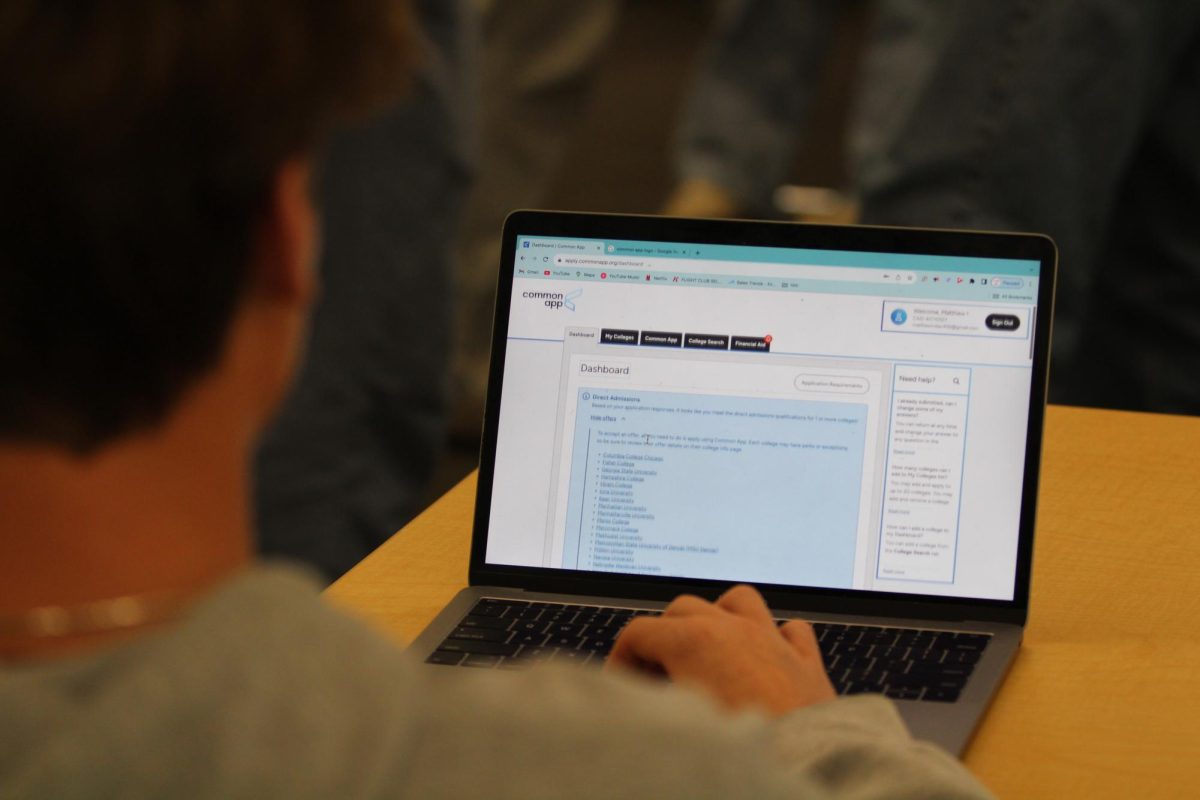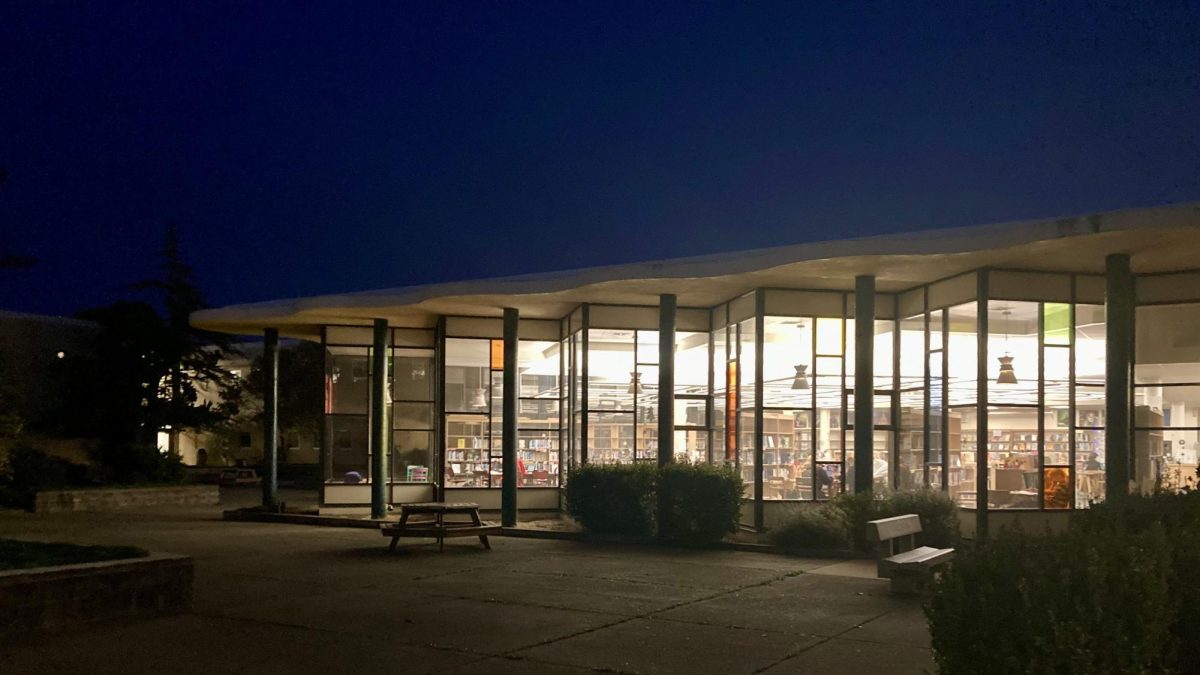
As of this school year, the Tamalpais Union High School District (TUHSD) no longer offers distinct core academic classes for students who are English Language Learners.
These “sheltered” classes were taught in English, but provided additional help to students in a smaller learning environment, according to Mike Levinson, the English Language Development (ELD) coordinator at Tam.
Sheltered classes were taught at Tam, but open to all students district-wide whose proficiency in English was at a beginning or early intermediate level as determined by a state test, according to Levinson, who recommended students for placement in sheltered classes. Last year, 13 students who would have attended Redwood went to Tam to take sheltered classes.
ELD classes are still offered at each of the high schools in the district. These elective courses focus solely on English language learning, as opposed to sheltered classes, which taught classes in a variety of academic subjects.
Sheltered class sizes ranged between five and 18 students and were offered in the subjects of math, English, social studies, and science. Only 39 students district-wide were enrolled in the program.
The decision to discontinue the program was ultimately made by Tam Principal Julie Synyard after a series of conversations among district and site administrators, teachers, and counselors, according to Kim Stiffler, the senior director of curriculum and instruction for the TUHSD. According to Levinson, the students requested that the program continue.
Stiffler cited research that showed students perform better academically in the long run when they are learning in heterogeneous classes. In some ways, the environment of non-English speakers in sheltered classes backfired, she said, because students were speaking to each other in their native languages rather than in English.
Stiffler also mentioned data that showed that English Language Learners in mainstream classes performed slightly better on STAR tests and the CAHSEE than their peers in sheltered classes. However, the GPAs of English Language Learners placed in mainstream classes were lower.
Levinson said that no one from the district gave him an official explanation as to why the programs were discontinued, though Synyard offered him some potential reasons.
“[Principal Synyard] felt that the sheltered classes segregated the kids. She felt it would benefit the kids to be with other students in the classroom, and to meet the American students, the first-language-English-speaking students,” Levinson said. Synyard was unavailable for comment.
According to Stiffler, limited funding was not the primary reason for the discontinuation.
Freshman Diego Kroell offered perspective on entering an English-speaking environment after growing up in Guatemala.
Kroell would have been recommended for the sheltered class program with only three years of English class under his belt. He came to the United States four months ago and said that while his teachers have been helpful in aiding his learning, he sometimes feels judged by other American students.
“[They say to me], ‘Why are you here?’ or ‘Why are you in this country?’ It’s strange,” Kroell said in an interview in Spanish.
While Kroell understands a little of what his teachers say, in order to understand English, he needs people to speak very slowly.
“It’s difficult,” he said, adding that there have been times when he’s felt uncomfortable in his classes. “It’s like you want to escape, but you can’t do that because it’s your class, and it’s strange. It’s unpleasant because it’s your first time speaking another language, and everyone else speaks it, and you don’t.”
Principal Synyard also voiced concern that some students were not receiving age-appropriate instruction since all students were put into the same classes, despite grade level, according to Levinson.
The program did not, however, restrict a student’s right to select higher level courses.
For instance, a junior could have opted to take chemistry––a course not offered in a “sheltered” format. But because of the increased social and emotional support from sheltered classes, that junior probably would’ve elected to take sheltered Integrated Science instead, according to Levinson.
Levinson said that termination of the program was never discussed with him. Debbie McCrea, who teaches Redwood’s ELD class and heads the World Language department, offered a similar perspective.
“I was never asked,” McCrea said. “It was a surprise to me. I had no idea that this was even being considered.”
Teachers of sheltered classes were highly trained in specific instructional techniques that facilitated student access to the curriculum. “Scaffolding,” for example, was a teaching technique used by teachers to give students more background information, so that English Language Learners could approach academia with the same context as a native English speaker.
“In a mainstream, non-sheltered class, there are many assumptions of what students know from living in the United States, from going to middle school here,” McCrea said. “A lot of times at Redwood it’s right to the analysis and the higher-thinking skills when [English Language Learners] don’t have the prerequisite knowledge about the topic or the prerequisite language skills in order to even be able to understand.”
These assumptions are particularly evident in history classes, McCrea said.
“For example, in a U.S. history class, American students study U.S. history from a young age and understand automatically about our independence, our laws. So when you get to high school and they ask you to do an analysis of that event, there is no way they can do that,” she said.
The high teacher-to-student ratio in sheltered classes allowed students to catch up to their English-speaking peers more comfortably, as well as form deeper relationships with their teachers and classmates, Levinson said.
“Coming into high school, there are a lot of kids who are insecure for social, emotional, and other reasons, and the sheltered classes were this really safe, nice, comfortable place,” he said.
The sheltered classes also offered a social structure for students to form a peer group with students from similar backgrounds and to escape the judgement that students sometimes encounter from their English-speaking peers, according to McCrea.
“I’ve had students who felt like other students are laughing at them when they’re speaking,” McCrea said.
Levinson and McCrea offered suggestions to teachers who currently have English Language Learners in their mainstream classes. Non-verbal communication strategies, such as visuals, charade-like aids, and graphic organizers, can be key to helping a non-native-English speaker understand the material.
English Language Learners may need more time to complete homework since they’re working extra hard to decipher new vocabulary, according to McCrea.
“I see a lot of my EL students spend hours on their homework, so many hours. For them to do a simple reading takes maybe five times as long because they have to look up every word,” McCrea said.





